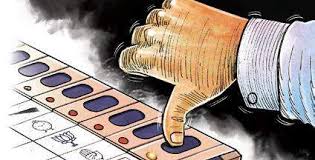Voters make beeline at polling booths
LEH: Ladakh witnessed its first parliamentary election as a Union Territory on Monday, May 20, marking a significant milestone since the abrogation of Article 370 in 2019. With the transition from a part of Jammu and Kashmir to a Union Territory, this election held immense importance for the region.
The election, as per news agency—Kashmir News Observer (KNO), was conducted across 577 polling stations in the districts of Leh and Kargil, making it India’s largest parliamentary constituency by area. Notable new arrangements were made, including a tent-built polling station at an altitude of 15,000 feet and a specially constructed polling station for a nuclear family in the remote village of Warshi.
Chief Electoral Officer Yatindra M. Maralkar emphasized the Election Commission’s commitment to inclusivity and ensuring voting access for all, including elderly and disabled voters. “We made special provisions to ensure that even the most remote voters could easily participate in the voting process,” he said.
The Ladakh constituency has 182,571 registered voters and recorded a commendable 76.4% voter turnout in the 2019 elections.
Three candidates contested for the Ladakh seat. The BJP fielded Tashi Gyalson, while the Congress nominated Tsering Namgyal. The contest was triangular, with independent candidate Haji Hanifa Jaan also in the fray. Hanifa, contesting from Kargil, received support from the National Conference (NC), Congress, and Kargil Democratic Alliance (KDA) supporters.
The voting process concluded smoothly, with a high turnout of 67.15 percent.


